Bird News from Nial Moores, Bernhard Seliger, Andrey Averin, Zeng Qing and Lu Cai with officials from the Ministry of Land and Environment Protection
In early December, agreement was reached at the Scaly-sided Merganser Task Force meeting in Dongting and the EAAFP MOP10 in Hainan to try to confirm whether or not a substantial number of Anatidae overwinter in the DPRK; and whether or not these include good numbers of Scaly-sided Merganser.
With the essential and much-appreciated support of the Hanns Seidel Foundation (Korea office) and Ministry of Land and Environment Protection (MoLEP), we therefore organized an international team that represented all the main range states of the merganser and pre-selected potentially good survey sites on three major rivers in the west of the country, focusing on river stretches below dams where water might remain unfrozen: the Taedong, within Pyongyang and at the West Sea barrage (with insufficient time for MoLEP to get permission to visit several lower stretches); the Chongchon (within about 30km of Hyangsan); and the Taeryeong (near its estuary; and below a major dam).
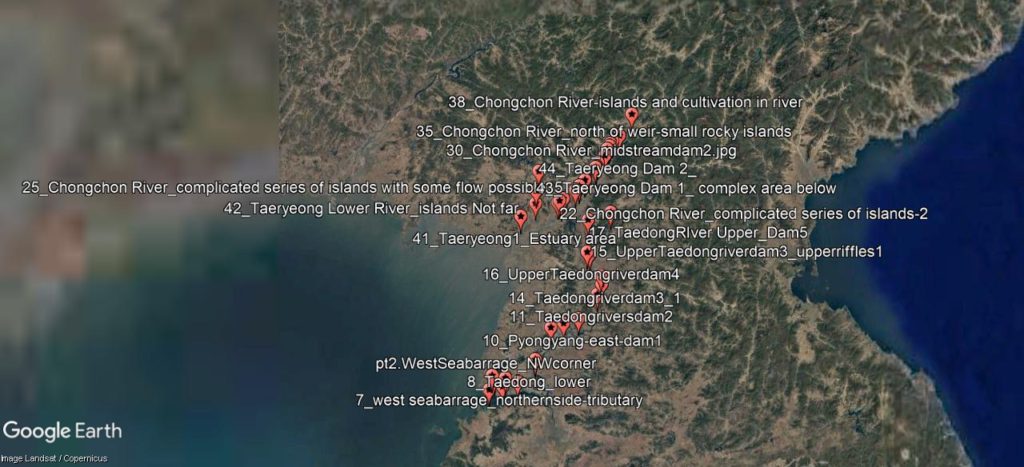

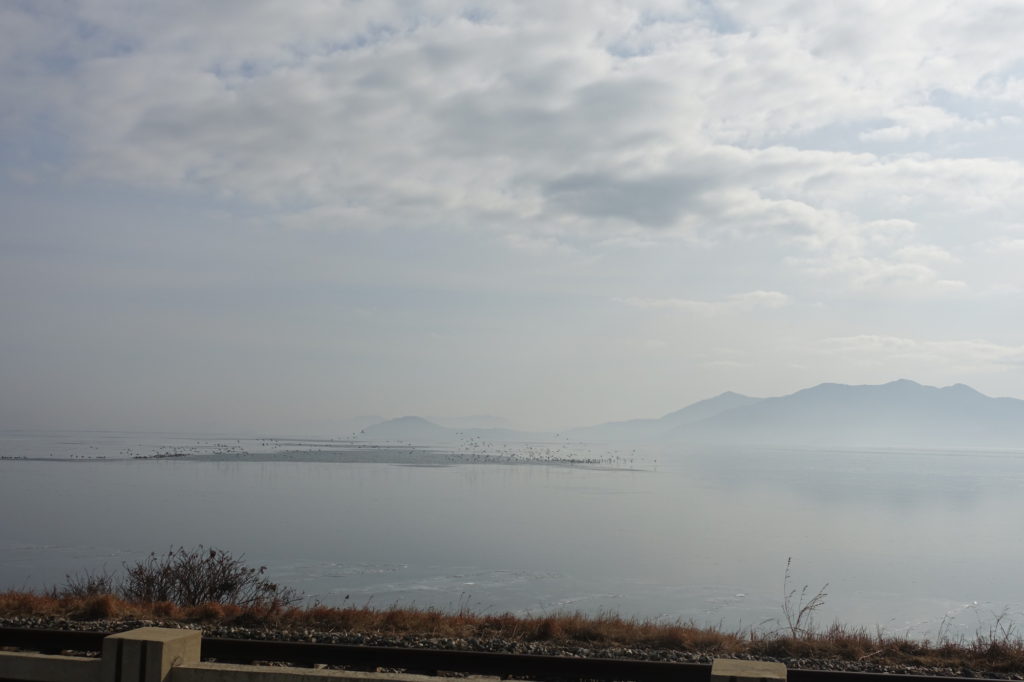
© Nial Moores. Most of the barrage lake was covered by ice – and a thousand or so people ice-fishing!- though some outer areas were kept open by an ice-breaking ship and held flocks of duck and Eurasian Coot

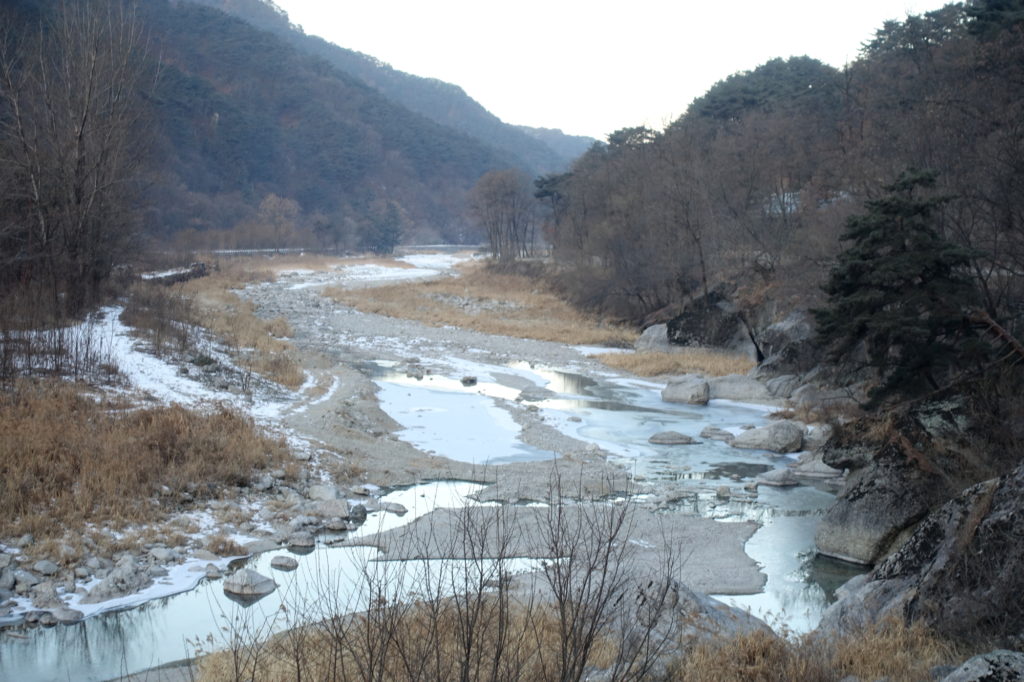
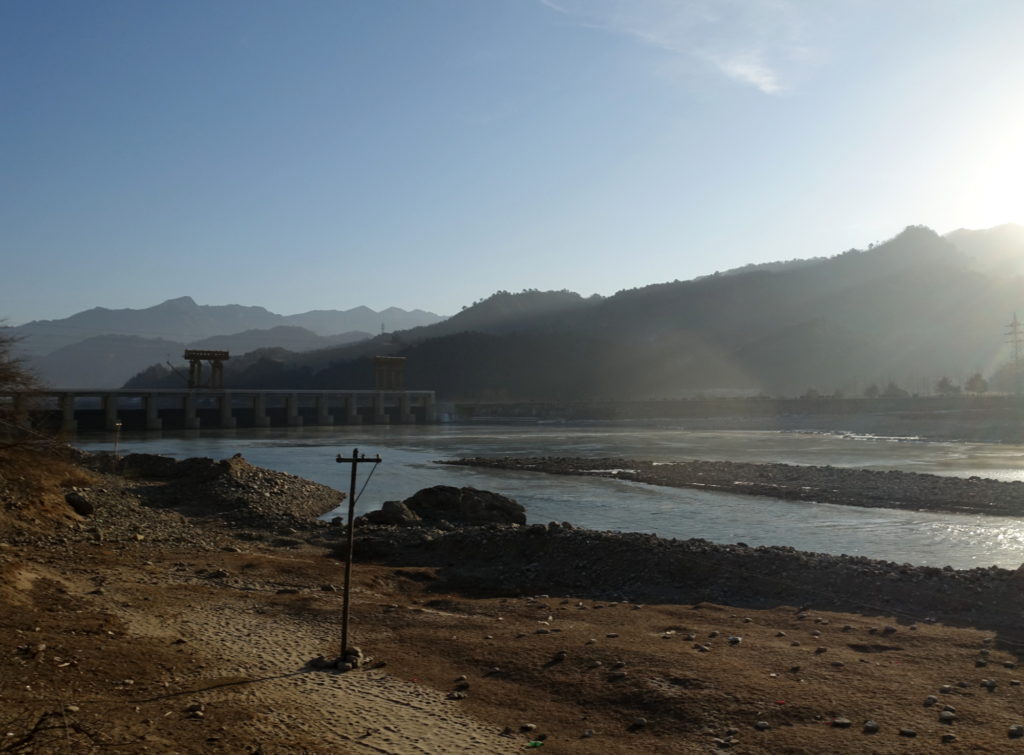

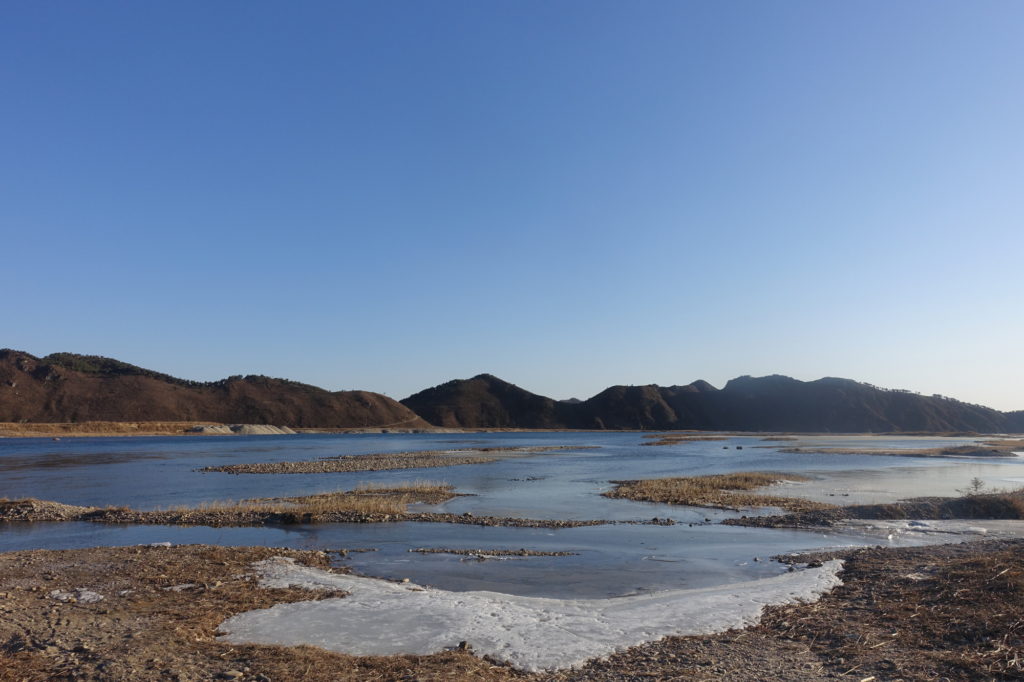
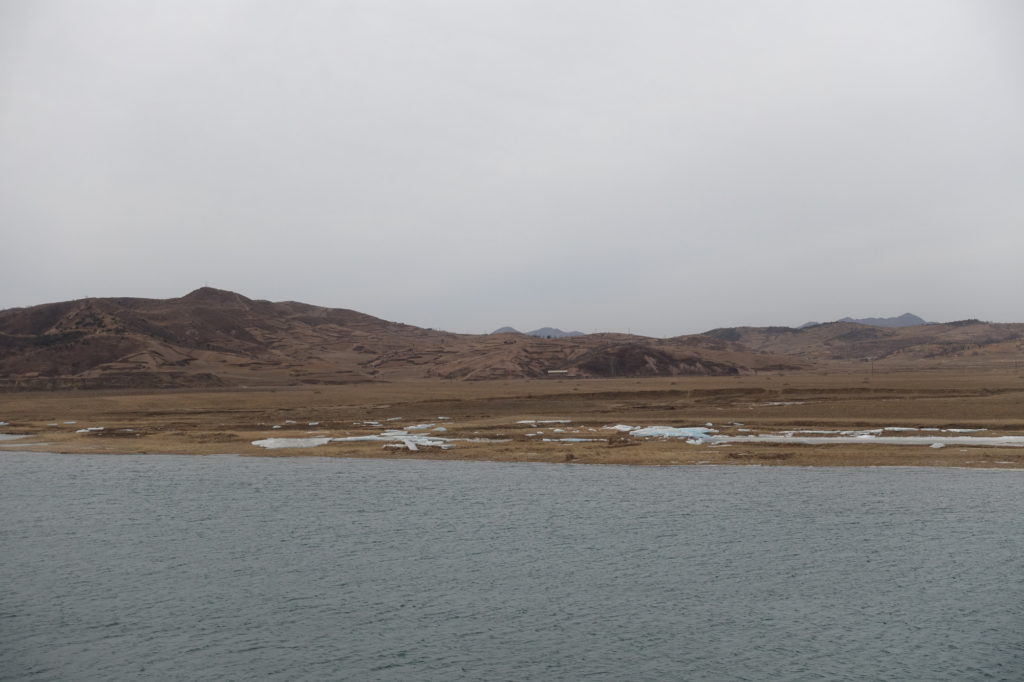
The survey was successful in several ways, recording a total of c. 77 species (including some scarcely reported in winter and several thousand duck, counts of which will – along with of other waterbirds – be submitted to the Asian Waterbird Census) and in helping to document the current (and often poor) status of river habitat. Importantly, we failed to find any Scaly-sided Merganser, suggesting that the DPRK is probably not an important part of the winter range of this species – although a frustratingly large amount of time was lost due to administrative issues meaning that probably half of the sites we had hoped to visit remained un-surveyed.
With much of the landscape frozen (with morning minima typically about -12C) and remarkably dry, there were rather few birds in the wider landscape, with highest counts of e.g. only two Naumann’s Thrush, 90 Brambling, three Rustic Bunting and 11 Pallas’s Reed Bunting .
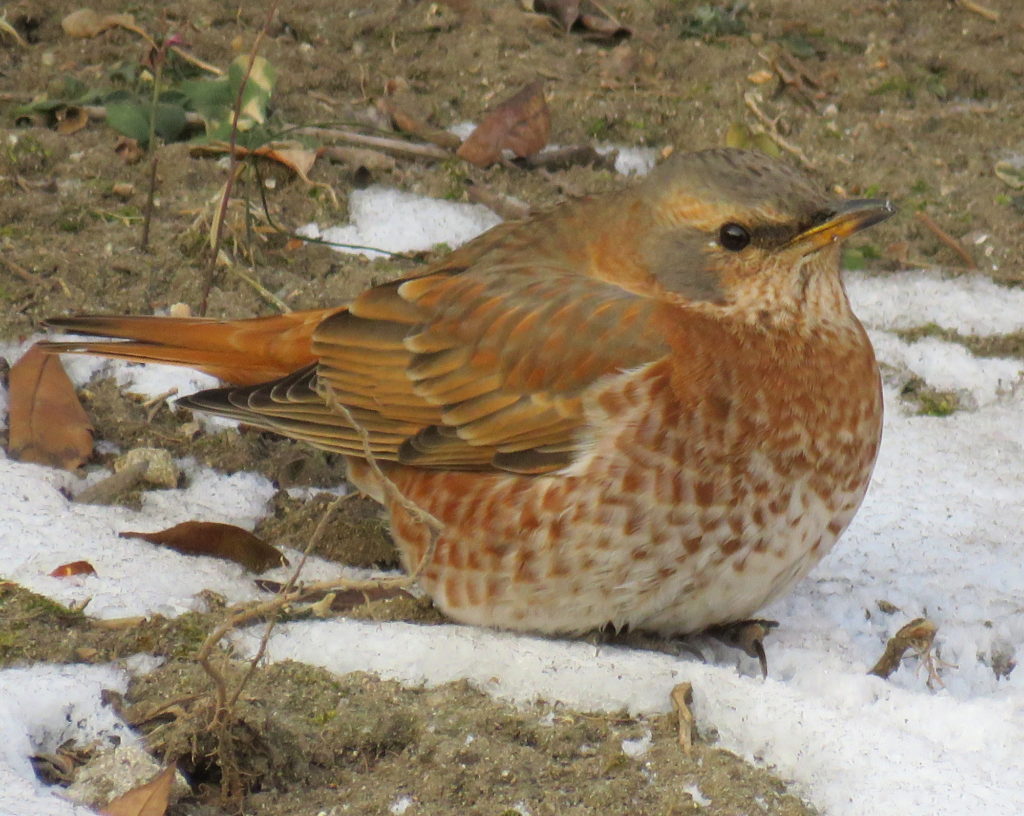
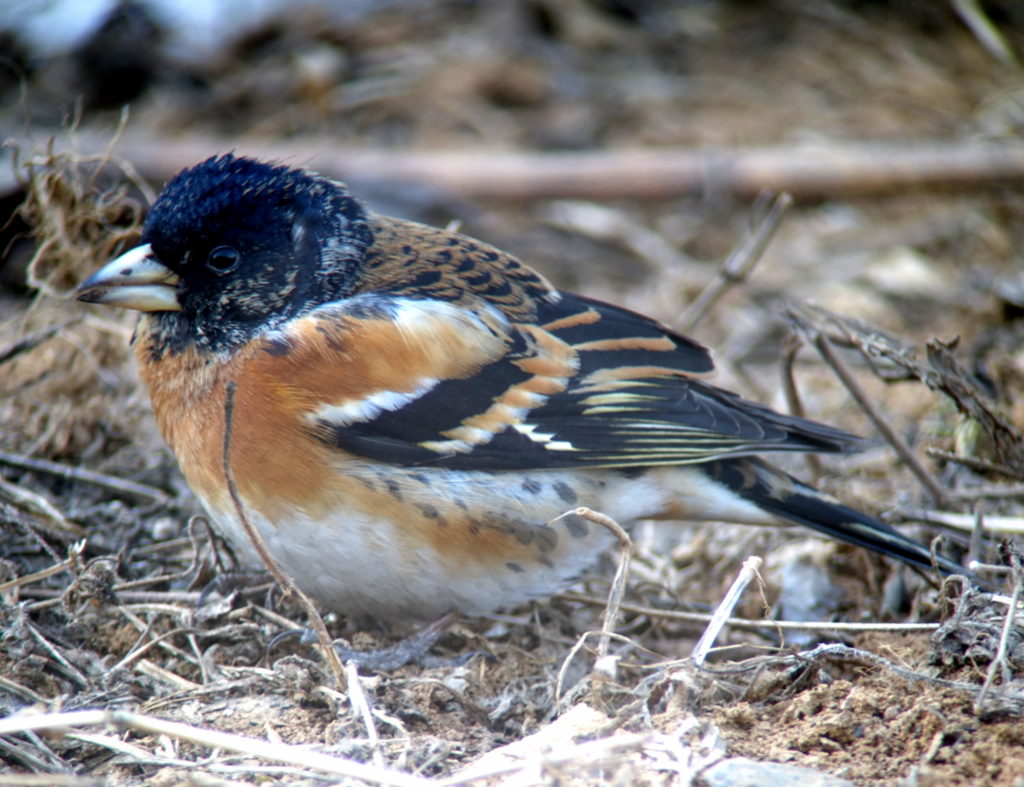
Species / counts of note in the Korean context included:
Eastern Spotbilled Duck Anas zonorhyncha. The most widespread and numerous duck species, with a total of 2,228 individuals counted (with c. 1,300 of these at the West Sea Barrage near Nampo).
Mallard Anas platyrhynchos. The second commonest duck, with 1,928 counted.
Common Goldeneye Bucephala clangula. A total of 897 were counted, with the vast majority of these at the West Sea Barrage.
Common Merganser Mergus merganser. A total of 116 were found, with birds seen in six areas (with the largest concentration at the West Sea Barrage reclamation lake).
Arctic Loon Gavia arctica. One on the sea off from the West Sea Barrage on January 27th. According to Tomek (1999) there are very few west coast records of this species in the DPRK.
Pelagic Cormorant Phalacrocorax pelagicus. We counted a total of 152 in the sea off from the West Sea Barrage on January 27th, with about half of these already in breeding plumage suggesting local breeding. We saw no other cormorant species during the survey.
Solitary Snipe Gallinago solitaria. On January 30th, we watched one feeding out in the open in a stream originating in Myohyang National Park.

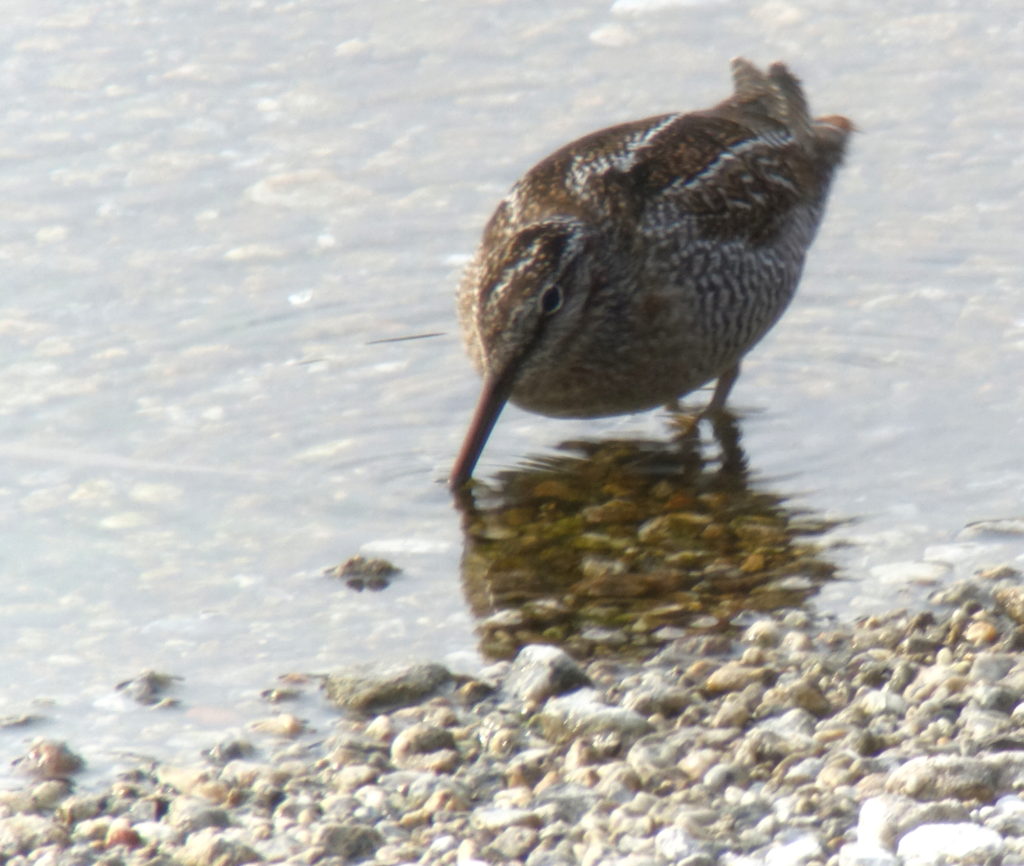
Hill Pigeon Columba rupestris. Near-extirpated from the ROK, we saw this species in 4-5 localities, with the largest concentrations being 20-23 on the West Sea Barrage road on January 27th; 22 on the hotel in Anju on February 1st; and 22 on the banks of the River Chongchon near Hyangsan on January 29th.

Eurasian Collared Dove Streptopelia decaocto. Grey-listed for the ROK by Birds Korea (2014), at least nine were in the grounds of our hotel in Anju on January 31st and February 1st.
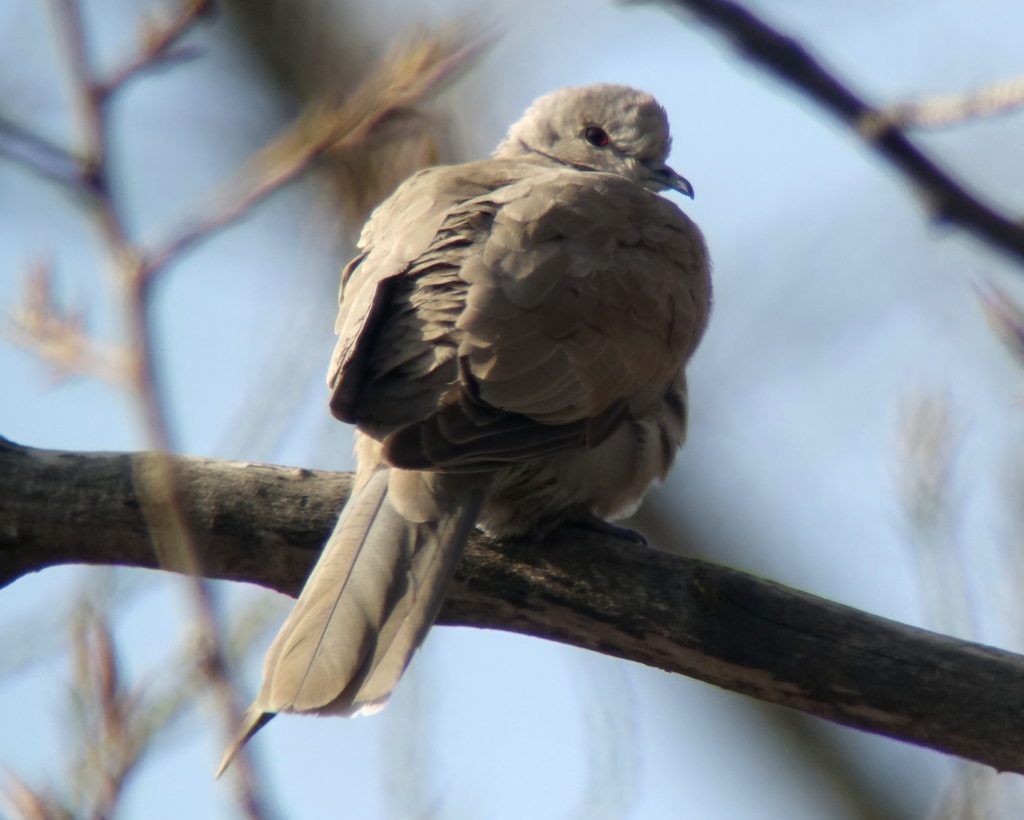
Eurasian Eagle-Owl Bubo bubo. One seen at dusk near the Chongchon River (on the border of Hyangsan and Gujang Counties) on January 30th.
Little Owl Athene noctua. One was seen at dusk near to Pachon City on January 31st.
Common Kingfisher Alcedo atthis. One was seen by AA on a stretch of the Taeryeong River on January 31st. Tomek (1999) did not trace any records for the DPRK in the winter months.
Black Woodpecker Dryocopus martius. A pair were heard and seen well in forest at Myohyangsan on January 30th.
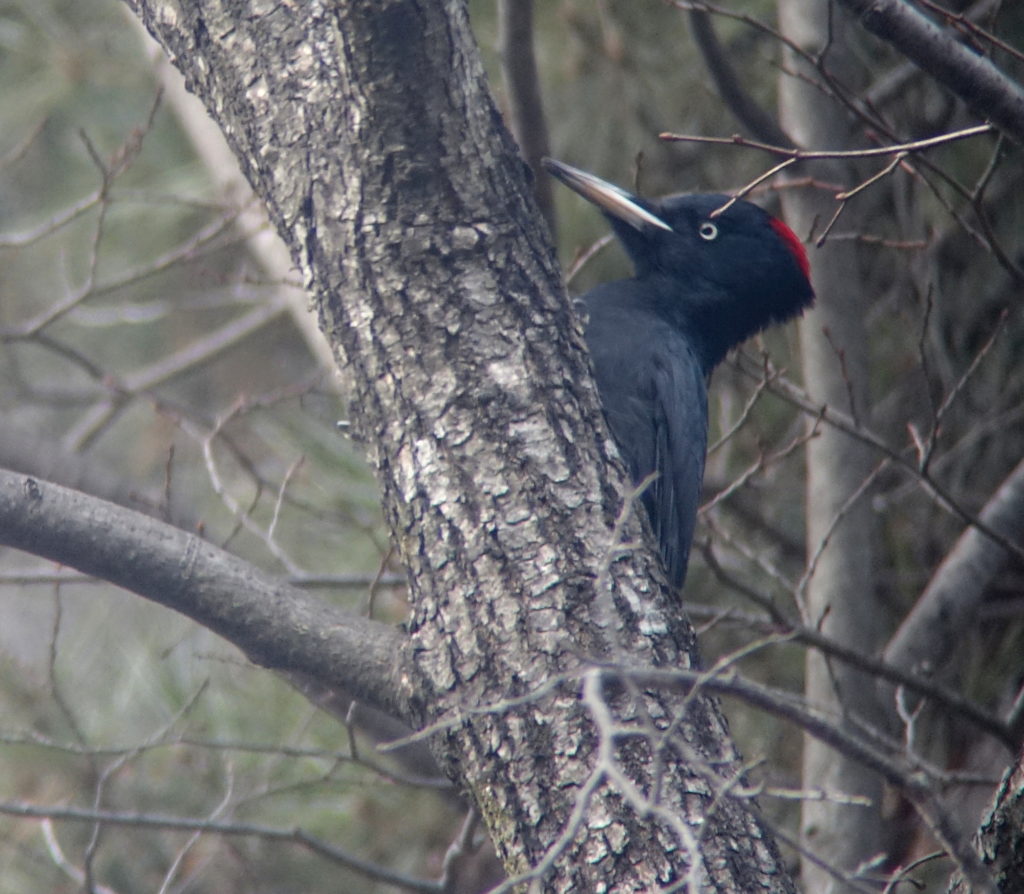

Daurian Jackdaw Coloeus dauuricus. Approximately 130 were with the Rook flock in Pyongyang on January 26th. Although Tomek (2002) assesses the species as a breeding, wintering and passage species, she does not list any records from January in the DPRK and Dr Will Duckworth (in lit. March 25th 2019) did not see the species in the DPRK in mid-winter either.
Rook Corvus frugilegus. Seen in Anju, where 30 were in rice-fields on February 1st, and in Pyongyang where the largest number was 1,200 roosting close to the Pothongang Hotel on January 26th (and subsequently). According to Dr Will Duckworth (in lit. March 25th 2019), this Pothongang roost contained only “a few dozens” in the early 2000s
Carrion Crow Corvus corone orientalis. Only four birds noted in total (two in Pyongyang and two close to Hyangsan), again suggesting a major decline has taken place in the past few decades.
Willow Tit Poecile montanus. One possible was heard (giving the usually distinctive “ChAY ChAY!” call), and another was digiscoped nearby, both in Myohyang National Park on January 30th.
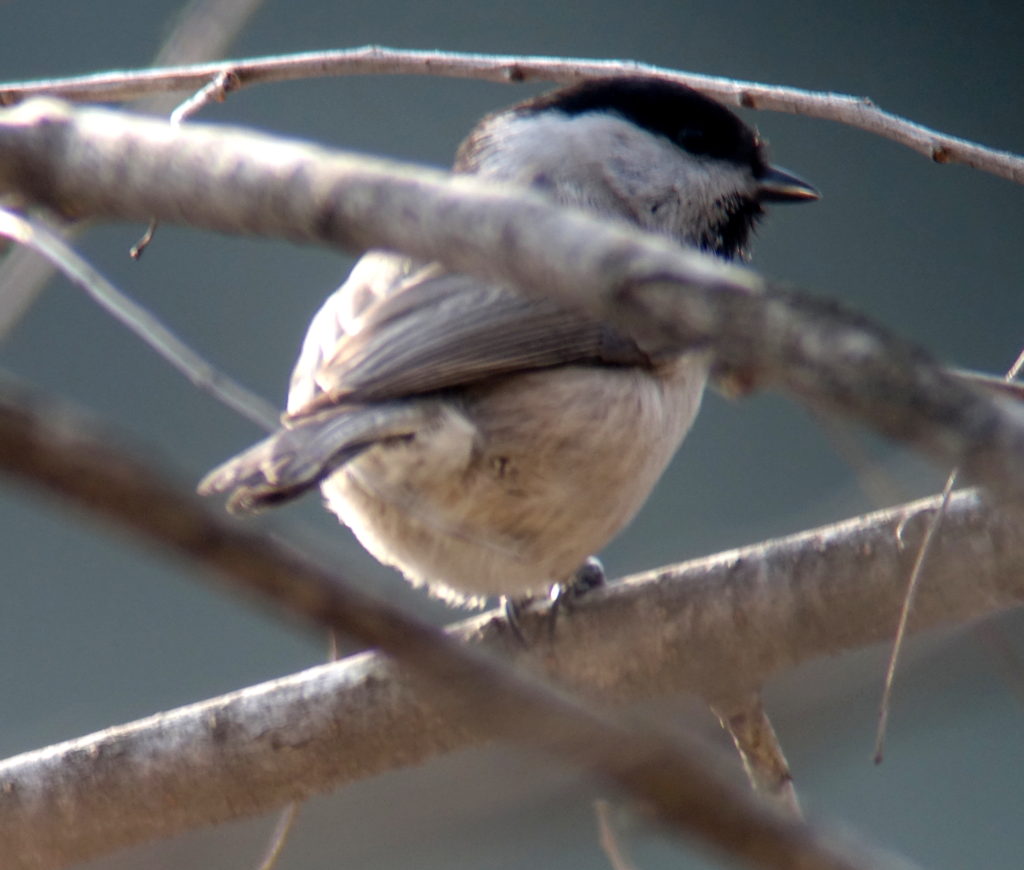
© Nial Moores. This bird (above) was not heard to call but was seen within a few 100m of another bird that was heard to call like a Willow, though distantly. Both Willow Tit and the much more widely-distributed Marsh Tit were described by Tomek (2002) as regular at this site, a status assessment that does not match well with Duckworth’s greater experience at the site in the early 2000s: he instead considered the species to be more irruptive in nature (and “somewhat erratic” in occurence: Dr Will Duckworth in lit. March 25th 2019). Although Willow Tit in eastern Primorye looked strikingly pale, grey-washed above and long-tailed to me (making separation from Marsh relatively easy), identification of some subspecies of this species pair remains extremely challenging, including here on the Korean Peninsula. Looking at the bill in this and one other poorer image, the pale look towards the base appears to be a combination of the bird eating a small seed and the sun shining through the near-closed bill. (If not, and the pale spot is on the bill itself, above the cutting edge, then of course this bird is instead much more likely an odd-looking Marsh Tit). More striking in the field and in the images to me, the bill looks rather longer and less stubby than expected in Marsh in Korea, and research on specimens by Tomek (2002) confirms that in the DPRK Willow Tit on average are indeed longer-billed than Marsh (indeed, according to AA, bill length is the main way that researchers in his part of Russia separate the two species). As further (weak?) support for ID as Willow, the head also looks large and the neck “bullish”; the cheeks are washed strongly with buff-brown (as in Willow Tits seen on the Chinese side of Baekdusan in 2016); the crown has a brownish cast; and the bird showed rather more extensive pale in the tertials than is usual in Marsh (though some can look very similar in this respect!).

© Bernhard Seliger

Light-vented Bulbul Pycnonotus sinensis. One in the grounds of the hotel in Anju on January 31st and three there together on February 1st is presumably the first national record of overwintering.
Chinese Nuthatch Sitta villosa. Surprisingly widespread, with small numbers logged in four areas.
Brown Dipper Cinclus pallasii. Locally common in suitable habitat, with 15 counted close to Hyangsan.
Chestnut-eared Bunting Emberiza fucata. One, in a small flock of Pallas’s Reed Bunting that also contained a possible Little Bunting, was near the Taeryeong River on January 31st.
A fuller report for the Hanns Seidel Foundation and to share with MoLEP is now in progress; and will be available upon request for Birds Korea members. Observations will also be added to eBird as time allows.

References
- Duckworth, J. W. 2006. Records of some bird species hitherto rarely found in DPR Korea. Bull. Brit. Orn. Club. 126: 252-290.
- Duckworth, J.W. & Kim C. 2005. Scaly-sided Mergansers Mergus squamatus on the lower Chongchon River, central Korea. Wildfowl 55: 135-144
- Moores, N., Kim, A. & R. Kim. 2014. Status of Birds, 2014. Birds Korea report on Bird Population Trends and Conservation Status in the Republic of Korea. Published by Birds Korea, September 2014.
- Tomek, T. 1999. The birds of North Korea. Non-Passeriformes. Acta Zoologica Cracoviensia 42: 1-21.
- Tomek, T. 2002. The birds of North Korea. Passeriformes. Acta Zoologica Cracoviensia 45: 1-235.
Important NOTE:
Birds Korea is dedicated to the conservation of birds and their habitats in Korea and the wider Yellow Sea Eco-region. We are a small non-political conservation organisation that aims to provide best information on birds and their habitats to decision-makers and the general public, to help inform the conservation process. Birds Korea has an MOU with the Hanns Seidel Foundation (Korea). Dr Nial Moores of Birds Korea was contracted by the Hanns Seidel Foundation to help lead this bird research as part of a much-needed longer-term wetland conservation program supported by e.g. the intergovernmental Ramsar Convention Secretariat and several other international conservation organisations, with the aim of conserving Korean biodiversity in ways that can benefit local communities.

